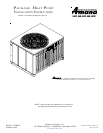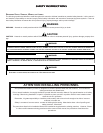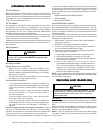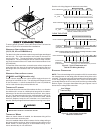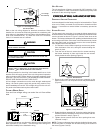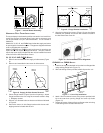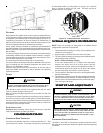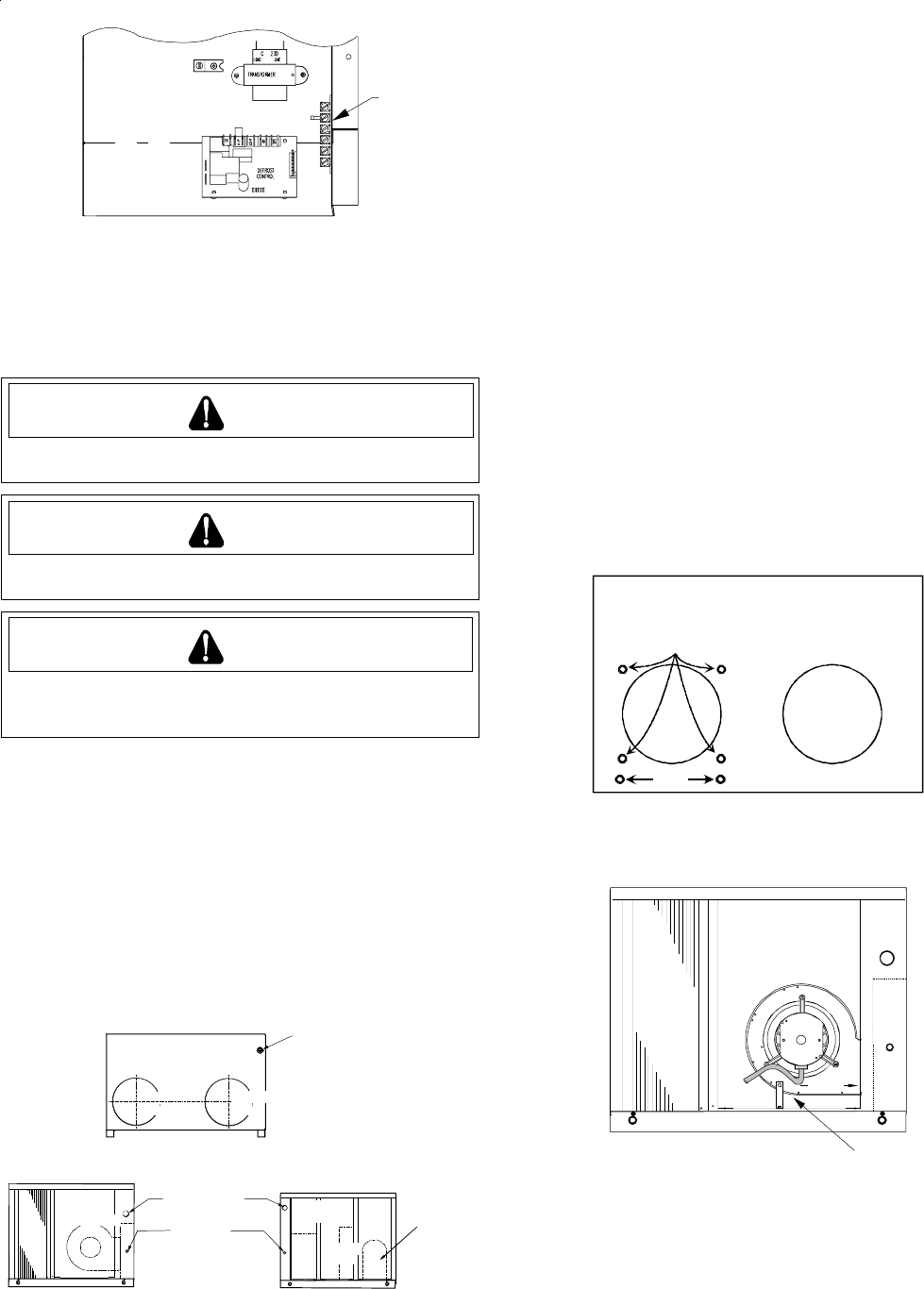
5
Low Voltage
Terminal Strip
Figure 4 - Low Voltage Connection
Unit Control Box
Refer to the unit wiring diagram for electrical connections. When
installed, the unit must be electrically grounded in accordance with
local codes or in the absence of local codes, with the National Elec-
trical Code, ANSI/NFPA No. 70, and/or the CSA C22.1 Electrical
Code, if an external source is utilized.
WARNING
T
O AVOID PERSONAL INJURY OR DEATH DUE TO ELECTRIC SHOCK, WIRING
MUST BE PROPERLY GROUNDED.
CAUTION
T
O AVOID PROPERTY DAMAGE OR PERSONAL INJURY DUE TO FIRE, USE
ONLY COPPER CONDUCTORS.
CAUTION
T
O PREVENT IMPROPER AND DANGEROUS OPERATION DUE TO WIRING
ERRORS, LABEL ALL WIRES PRIOR TO DISCONNECTION WHEN SERVICING
CONTROLS.
V
ERIFY PROPER OPERATION AFTER SERVICING.
The best protection for the wiring is the lowest rated fuse or circuit
breaker which will supply power to the unit during normal operation
without nuisance trips. Such a device will provide maximum circuit
protection. DO NOT EXCEED THE MAXIMUM OVERCURRENT
DEVICE SIZE SHOWN ON UNIT DATA PLATE.
All line voltage connections must be made through weatherproof
fittings. All exterior power supply and ground wiring must be in ap-
proved weatherproof conduit. Low voltage wiring from the unit con-
trol panel to the thermostat requires coded cable.
FLEXIBLE WIRING SETUP
Line and low voltage wiring can enter the unit from either
side.
ELECT.
CONTROL
BOX
EVAP
COIL
COMPRESSOR
LOW
VOLTAGE
REAR VIEW
SIDE VIEW
ELECTRICAL
SIDE VIEW
BLOWER
ELECTRICAL
SUPPLY
AIR
RETURN
AIR
HEATER
KIT
For knockout locations, see dimension drawing in the Product Data
Book applicable to your model* . Use the Single Point wiring kit to
add further flexibility to the installation wiring.
UNIT VOLTAGE
The unit transformer is factory connected for 230V operation. If the
unit is to operate on 208V, reconnect the transformer primary lead
as shown on the unit wiring diagram.
CIRCIR
CIRCIR
CIR
CULCUL
CULCUL
CUL
AA
AA
A
TINTIN
TINTIN
TIN
G AIR AND FILG AIR AND FIL
G AIR AND FILG AIR AND FIL
G AIR AND FIL
TERTER
TERTER
TER
SS
SS
S
DOWNSHOT AIRFLOW CONVERSION
Units are shipped from the factory ready for horizontal airflow. These
units can be easily converted from horizontal to downshot airflow
delivery. If conversion to vertical airflow is necessary, proceed as
follows:
BLOWER ROTATION
The first step in the conversion is to rotate the blower assembly for
downshot airflow. After rotating the blower assembly, the blower motor
must be oriented as shown in Figure 7 with the motor wires at the
bottom. This keeps condensate from puddling inside the blower motor
and causing motor failure. If the motor is not oriented correctly, loosen
the motor belly band and rotate the motor to the correct position,
then retighten the motor belly band.
1. Cut insulation around bottom openings and remove panels
from the bottom of the unit, saving the screws holding the
panels in place.
2. From the rear of the unit, remove the four screws securing
the blower assembly in place and loosen the two screws
directly below the duct opening (Figure 5).
Remove
Loosen
Figure 5 - Duct Removal
3. Remove the clamp securing the blower assembly to the
bottom of the unit. The clamp and screws may be discarded
(Figure 6).
Remove
}
{
Airflow
Figure 6 - Clamp Removal
4. Rotate the blower assembly 90° clockwise, setting the blower
assembly outlet on the bottom of the unit and secure with two
screws removed in step 2 (Figure 7) .
5. Tighten the two screws below the duct opening that were
loosened in step 2.
NOTE: To keep condensate from collecting inside the blower motor,
ensure the motor is oriented with its leads exiting at the bottom of
the motor (Figures 5 and 6).



